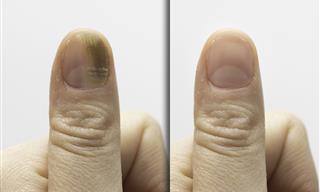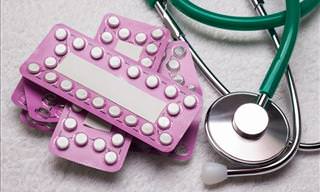Karin O’Sullivan, the Clinical Lead at FPA, a sexual health charity based in the UK says “It’s not actually necessary to take a break from the contraceptive pill for a withdrawal bleed, it doesn’t do any harm to skip this break or take the combined oral contraceptive pill continually. In fact, many women already do this when they go on holiday or if they tricycle packs.”
"Providing it is safe for women to take the combined oral contraceptive pill and there are no medical contraindications then it is safe for women to use any of the pill-taking regimes," she says, whether it is traditional (with regular breaks), tricycling (a break every three packs), extended (no breaks), or flexible (taking breaks but not falling into one of the previous categories). However, it appears that there is no biological evidence that 'giving your body a break' makes any difference. There is no build-up of hormones and when you stop taking the pill, the effects are immediately reversible.
So, to make things clear, the period that you get when you are on the pill is not really a period at all. Rather, it is a withdrawal bleed. It is the body's response to the sudden drop in hormones that occurs when you stop taking the active pills and switch to the placebo pills. But what is the difference between the withdrawal bleed and a regular period? When on the pill, the uterine lining (endometrium) doesn't have the chance to build up. It remains thin which makes the bleed lighter than a regular period and less necessary.
Susan Wysocki, Editor in Chief of journal Woman's Health Care, former President and CEO of the National Association of Nurse Practitioners, and President of Woman’s Health says “I sometimes describe that as the difference between shag rugs, and a normal period to indoor-outdoor rugs when you’re on the Pill.”
If you decide to take the Pill continuously you may experience what is called breakthrough bleeding. This is a bleeding or spotting between periods. It isn't harmful, but some people may choose to take a break, then resume the Pill again after a few days - the flexible regimen. If you decide to persevere, these symptoms may dissipate with time.
According to the Mayo Clinic, breakthrough bleeding typically decreases over time, as your body adjusts to the new regimen. If breakthrough bleeding becomes heavy or lasts for more than seven days in a row, it is vital that you contact your doctor.
With regard to the placebo pills found in the monthly pack, if they are unnecessary, why do we have them and where did the idea stem from in the first place? Well, it's generally due to a complicated blend of social, economic, political and even religious factors that hark back to the 1960s when the Pill first became available for reproductive purposes. Today, affordable and easy-to-use pregnancy tests are a quick hop and a skip away at your local CVS store. Consequently, a pregnancy scare can be confirmed within an hour of noticing a late period. Furthermore, there are ultrasounds that can date a pregnancy to the week it was conceived. This wasn't the case 50 years ago. Later, the idea of the break and the placebo pills were added to trigger a withdrawal bleed, reassuring the user that she was not pregnant in the absence of instant pregnancy tests and ultrasounds.
Wysocki, also a former member of the American Sexual Health Association Board of Directors says "There was a practical reason for designing the pill three weeks on, one week off but there really wasn’t a biological necessity for it from the perspective of birth control pill.” Adding that, “The myth is that you must have bleeding when you’re taking oral contraception when in fact that was just engineered into the pill for these other reasons.”
Furthermore, it was decided by the makers of the Pill that the addition of the withdrawal bleed would help a woman accept their product as a form of contraceptive, primarily because it would feel more 'natural'. They also felt that women wanted to have periods and they'd likely feel uncomfortable with a birth control method that stopped them. “Studies have consistently shown that when women are told there are no harmful effects from not having a period while on the Pill, especially with regards to fertility, they choose to have less frequent periods or eliminate them entirely,” Nitu Bajeka, ObGyn and co-founder of Women for Women's Health UK, wrote in an article for HuffPost.
In addition, it wasn't just the women who needed convincing that the Pill was natural, one of its creators, John Rock, was a devout Catholic. Rock had made a living teaching women how to manage their fertility cycle depending on whether or not they wanted to have children, performing hysterectomies and talking openly to his parents about sex, including unmarried women. This was quite surprisingly progressive at that time. At the same time, he was aware of the deep-rooted social conservatism within the Catholic Church. As most people know, Catholic dogma will tell you that contraception is considered a sin.
However, a loophole in the belief system exists. It was believed that a married couple would not be sinning if there was a natural reason keeping them from falling pregnant (hence the rhythm method). So, Rock believed that if the Pill - which was, after all, just a top-up of hormones already produced in the body. This meant that it could be marketed as 'natural' and thus win the approval of the Catholic Church. Of course, it didn't, but it was another reason for introducing a seven-day break and withdrawal bleed.
Over the past five decades, there have been developments in technology and progress on the sexual freedom front that would make the placebo pills irrelevant. Furthermore, the majority of gynecological professionals agree that it is not only perfectly safe to take the active pills continuously, but it is preferable to do so, especially in women who suffer from health conditions like endometriosis or dysmenorrhea. Also, a woman with milder menstrual symptoms might benefit from skipping her period altogether.
One of the repercussions of taking the Pill is the financial toll. “If you’re using four weeks of the pill instead of three weeks of the pill, at the end of the year you’re down two packs,” Wysocki says. “It’s an economic issue.” Adding that, "It’s not generally going to be offered as a first choice. The first choice is going to be whatever an insurance company and national health service etcetera are going to pay for."
But it's not just the placebo pill myth that won't disappear. Contrary to popular belief, a study earlier this year revealed that the Pill does not affect a woman's preference in male partners. You may, however, want to take an occasional break from the Pill if that's what you feel is right for you, however, you do not need to. It goes without saying that if you are thinking about making a change to your medication it is a good idea to speak to your health provider first and make sure you are taking the right pill for you.
Click Here for More Guides & Tips on Medications
 Go to BabaMail
Go to BabaMail























































